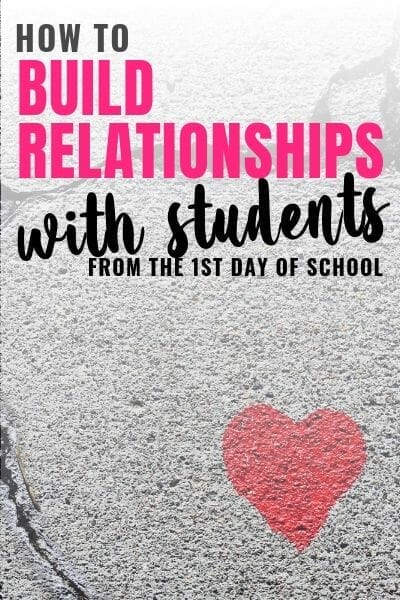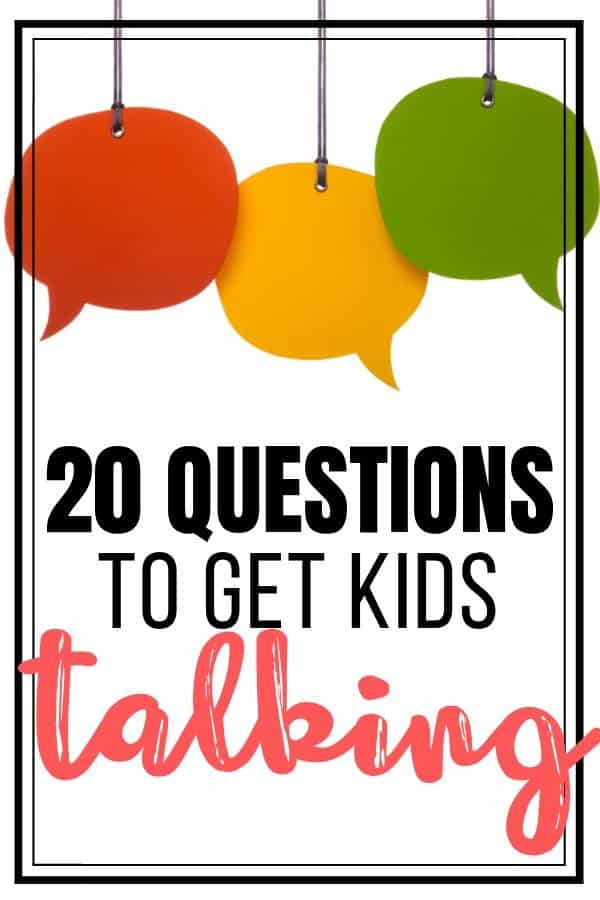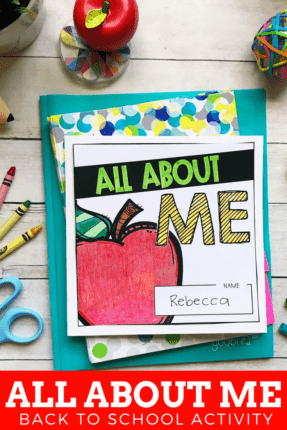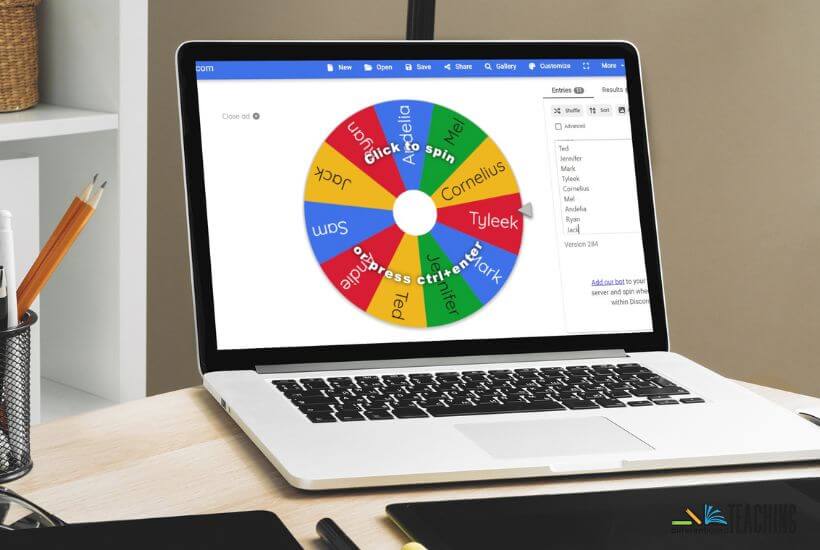How to build relationships with students from day one
As teachers, it’s obvious that we want our children to learn and master the standards. However, I think we all hope to reach them on a personal level as well. Most of us have had a teacher who treated us like we mattered. There was something special about walking into the door of his or her classroom. That relationship can really make a huge difference in how students feel about school and learning. The importance of building relationships with students cannot be overlooked, and each new school year YOU have the chance to be that teacher for your students.
However, it can be challenging to make a personal connection with every student in your classroom – especially if you teach multiple classes or are departmentalized. Here are a few tips on how you can foster a loving environment in your classroom and develop better relationships with every student that walks through your doors.
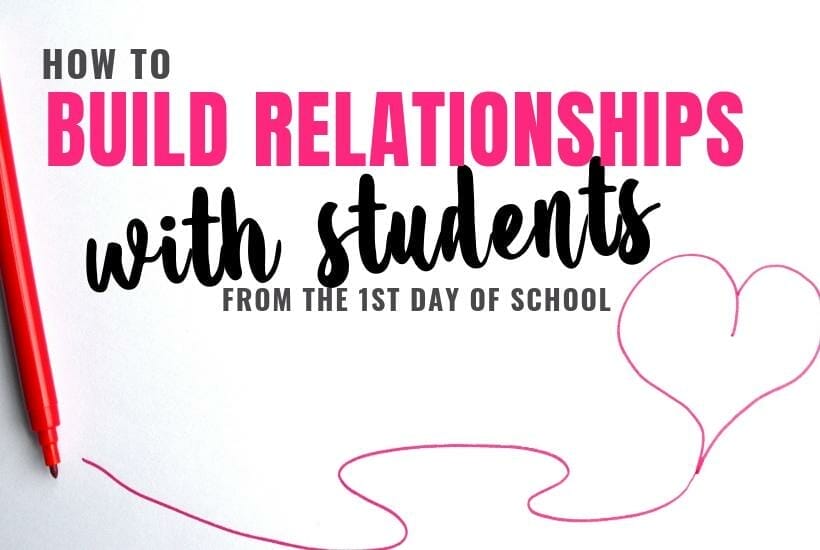
Super simple ways to build relationships with students
Getting started with building better relationships doesn’t have to be a long, detailed process. It really comes down to the small things that show we care.
Here are three simple ways to get started fostering strong relationships with your students from the first day of school.
1, Greet them individually each day.
One thing that I think can easily set a teacher apart from his/her peers is if they take the time to greet and connect with each student individually. Although it may take up a few extra minutes at the beginning of your day, it can show students that you see and acknowledge them.
While some teachers, like the one in the video below, have gone viral for their unique morning greetings, you don’t have to go this far to make a connection with your students.
In fact, I’d ask you to consider the amount of instructional time lost with this type of morning greeting and ask yourself whether you REALLY want to make that daily commitment. You might also ask yourself if your students are ready and patient enough to wait in this line for their turn.
If your answer is yes, go for it!
If not, no need to feel bad. Find a way that is truly YOU and represents your classroom and the environment you are fostering.
Check out this awesome video from Edutopia to learn more about the research about greeting students daily and a simple routine to help you get started.
2. Encourage individual skills, talents, and interests
Seems simple, right? However, there are often kids in our class who have special talents of skills that go unacknowledged. Sometimes these are activities that are outside of school so we don’t know about them. Other times, it is the quiet or shy kid who consistently is overlooked because he can always be depended on to “do the right thing”.
Take a minute or two to think about your favorite teachers from elementary school. What made them so special to you?
It probably wasn’t their cool classroom decor or the fact that they had a big classroom library. Most likely what you remember most was how that teacher made you feel. How he or she acknowledged you and what you were going to contribute to the world. Yes, she might have done some cool lessons or had a really fun routine. But for most of us, those special teachers are the ones we remember because they took the time to build a relationship with us.
In fact, many people can clearly remember encouraging teachers for decades and cite them as the reason they pursued their passions or tried to do well in school. They feel that these teachers SAW them.

Observe your students. When you notice something positive that stands out about a student, encourage it. It could be that she is great at dramatic reading.
Or that he has a knack for art.
Or that she is very good at thinking on her feet.
Or that he is skilled at explaining things in a way that his classmates can understand.
Try to identify and recognize a special skill in each of your students. When you see it in action, say it out loud. Praise can be a huge motivator, and it just makes people feel good.
You can even send special notes or postcards home to acknowledge the special skills, talents, or efforts you see in your students. In my classroom, I called these positive postcards, and I tried to mail each student two across the school year.
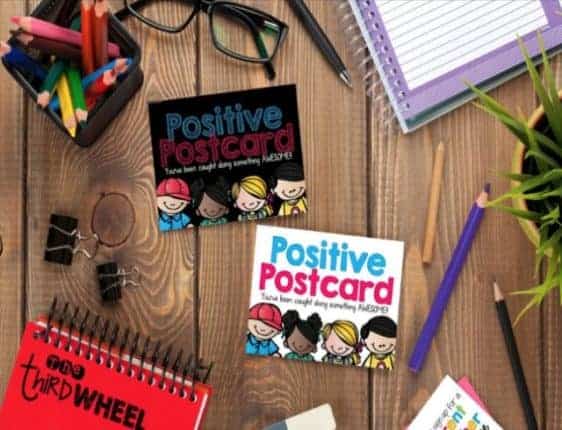
Not only does this go a long way with your students, but it also helps to foster relationships with parents, too. This can be especially helpful when you have to call with not-so-good news.
3. Be present & let them know you are there for them.
Don’t be afraid to make yourself available. Starting from those first days of school, make yourself available to talk when a student is frustrated or overwhelmed. Let your students know that you are there if they need to talk about something on their mind.
Make your classroom a safe space, where students can ask questions, receive support and encouragement, make mistakes, and feel loved.
Some students may never seek you out. However, others will be so happy to have a safe space to check in with a trusted adult to get their needs met.
If you find a student needs more time and attention than you can offer, consider alternatives like a journal or note writing system. A special notebook that allows the student to share their concerns privately but lets you write back during non-instructional time can help keep the relationship strong without sacrificing instructional time.
You can also consider doing a daily check-in with your whole class. A “check-in chart” or a simple program like Zones of Regulation can be a great tool for keeping you in the loop on how your students are feeling or if someone might be needing a little extra love and attention.
The chart by Erin Castillo that you’ll see in the video below recently grabbed some media attention. This simple format can be a great way to privately allow students to share how they are doing.
Building relationships with students is worth it.
Taking the extra time to start building relationships from day 1 can make a huge impact on both your students and the environment in your classroom. With the pressures that come from the mile-long list of standards you’re expected to teach this year, you might feel like you need to get started on academics immediately or risk not covering everything.
However, your classroom will run more smoothly and be a happier place when you take the time to foster relationships. Your students will be more open to asking questions and making mistakes, which means learning can happen more readily.
The three ideas shared above are just a few ways to have start building strong relationships with your students.
I’d love to hear what you do in your classroom. Share in the comments below!
